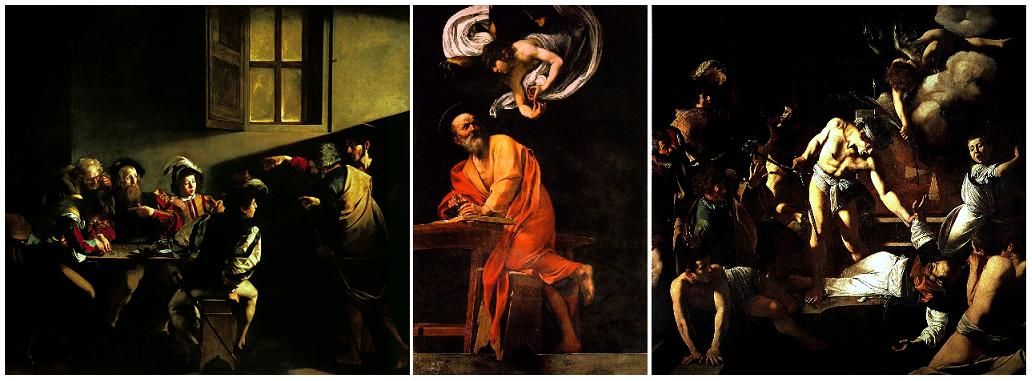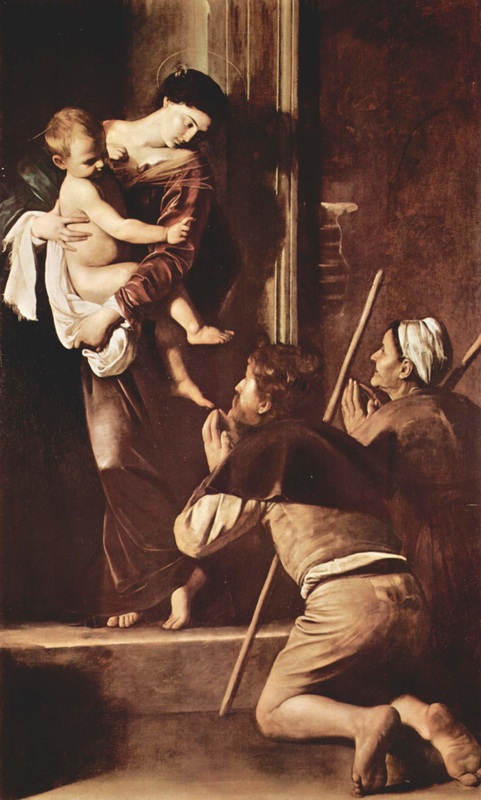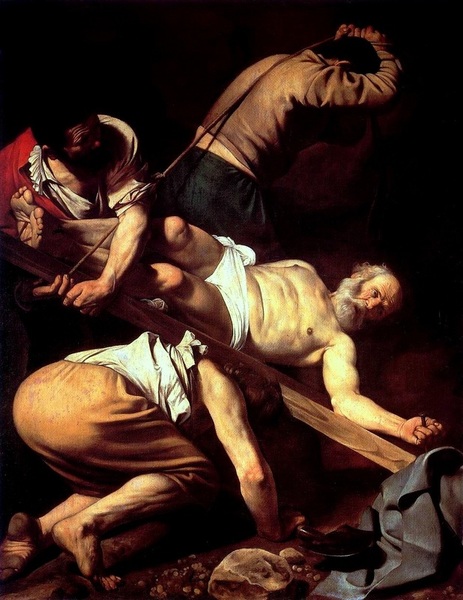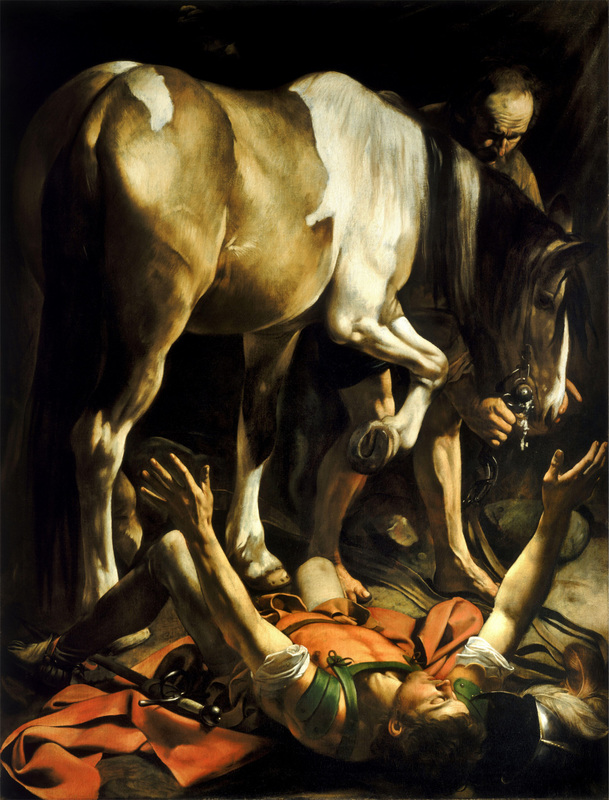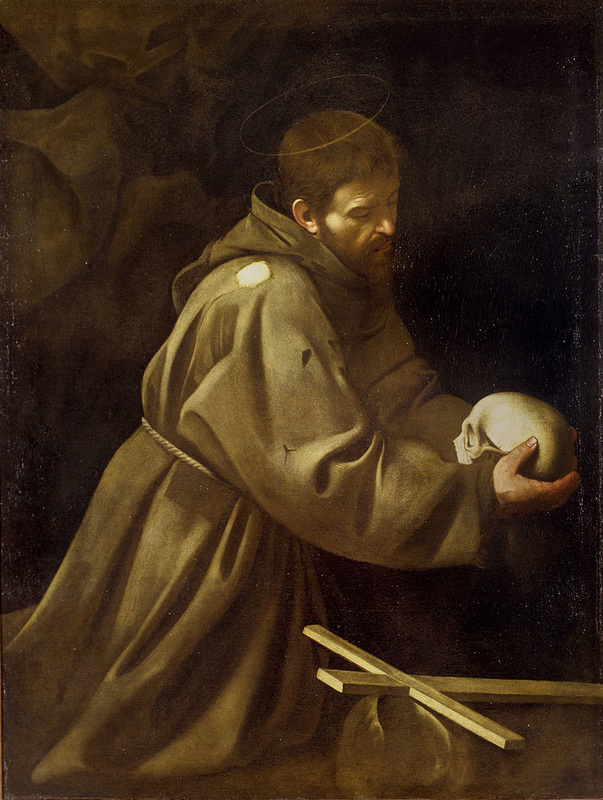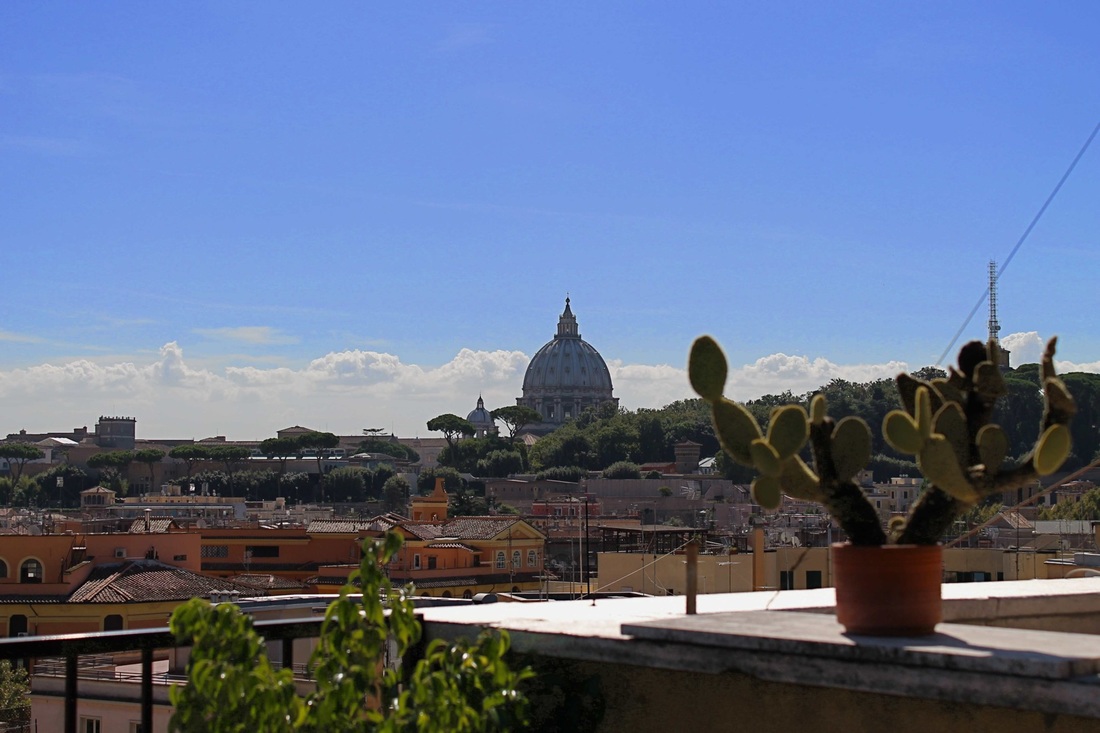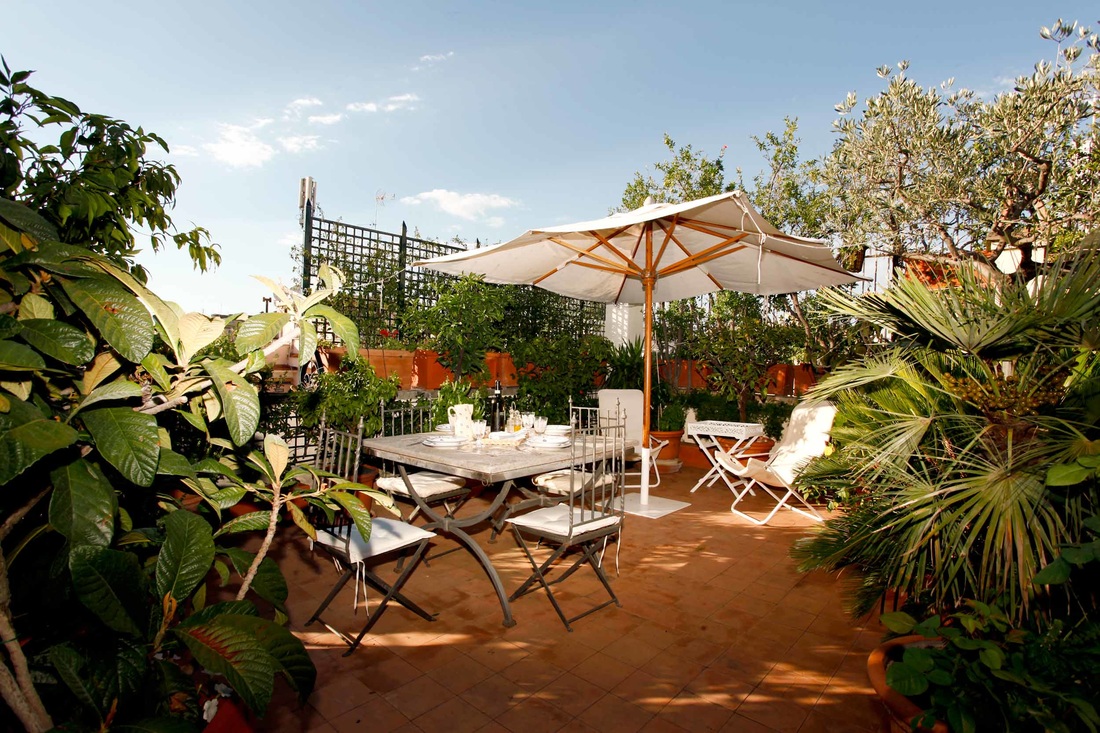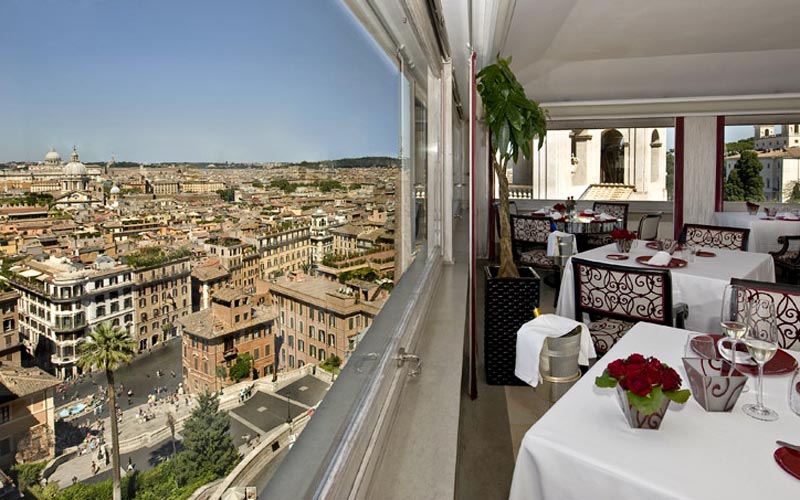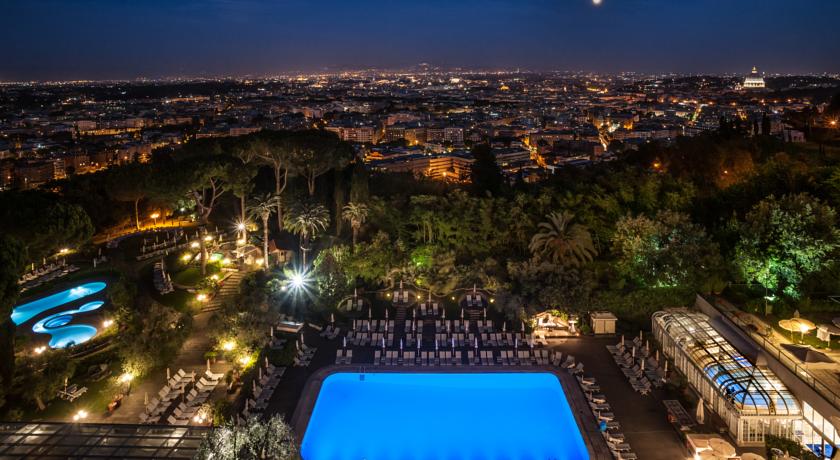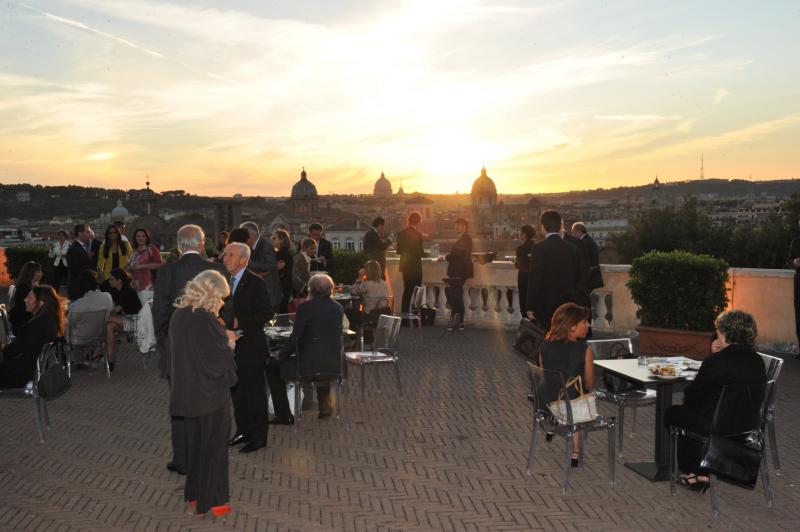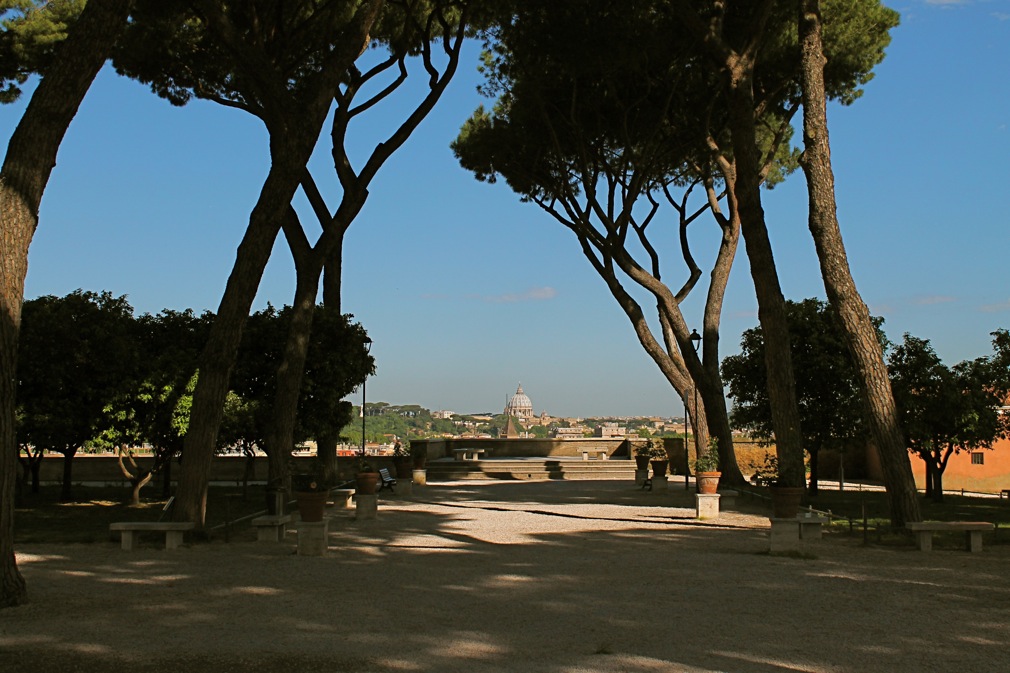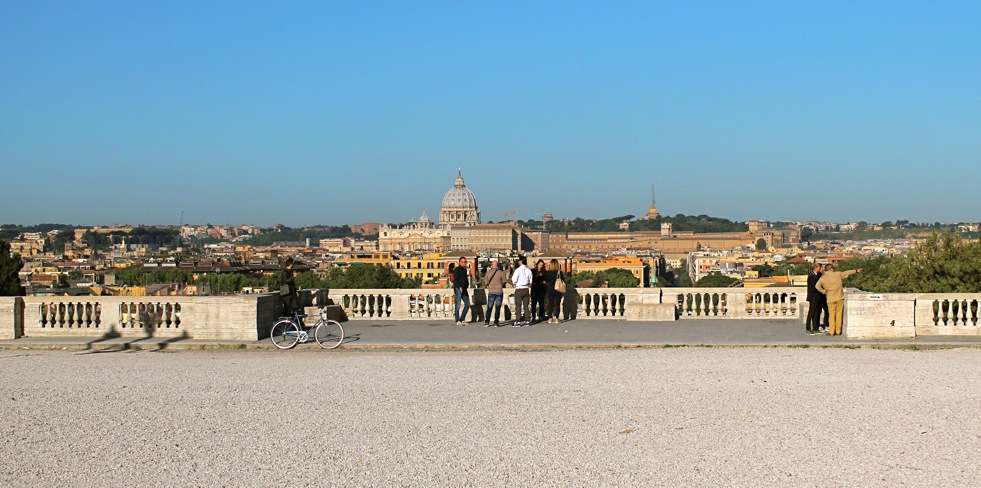It is particularly the case of one of the most extraordinary artist of the whole history of painting: Michelangelo Merisi da Caravaggio (1573- 1610), the great master of the "chiaroscuro" and the pioneer of realistic painting. Seven of his works are exposed in four different roman churches, not very far one from the other.
The most intensively moving experience is perhaps to discover his St Mathieu triptych (painted between 1599 and 1602) in "Saint Louis des Français", the French church of Rome with a beautiful and austere Renaissance facade (end of the 16th century) and a very rich late baroque interior decoration (beginning of the 18th century). In the fifth chapel on the left of the altar, the Contarelli Chapel, you can admire "The Calling of St Mathieu" facing "The Martyrdom of St Mathieu" (with a self-portrait of the painter on the left side of the painting) and, in the middle, the marvellous "St Mathieu and the Angel" called also "The Inspiration".
After these splendid experiences, you will probably want to see all the other Caravaggio's paintings exposed in roman museums (the third of all his work is in Rome). The richest one is the Galleria Borghese (with 5 paintings!). But there are some Caravaggio also in Capitoline Museum, Palazzo Barberini, Palazzo Corsini, Doria Pamphilij Gallery and the Vatican Museum.
And, last but not least, from the 24th March to the 3 July, you can make an extraordinary sensorial journey, a total immersion in the Caravaggio's world with the "Caravaggio experience", at the Palazzo delle Esposizioni (via Nazionale). Thanks to a video installation with the use of a sophisticated multi-projections system, original music and even fragrances, created by the famous Florence's pharmacy "Santa Maria Novella" that existed already in the Caravaggio's days.

